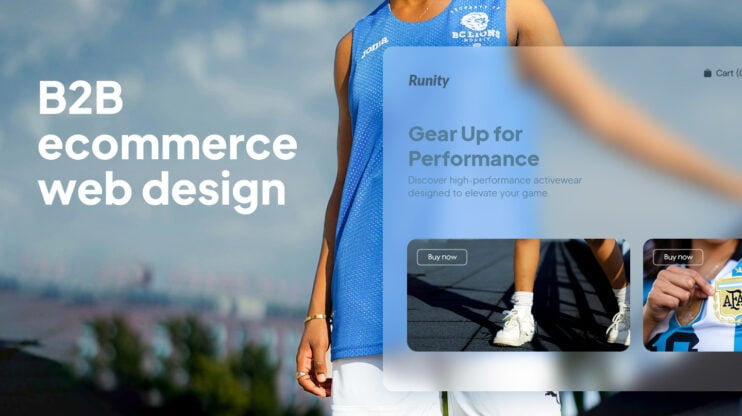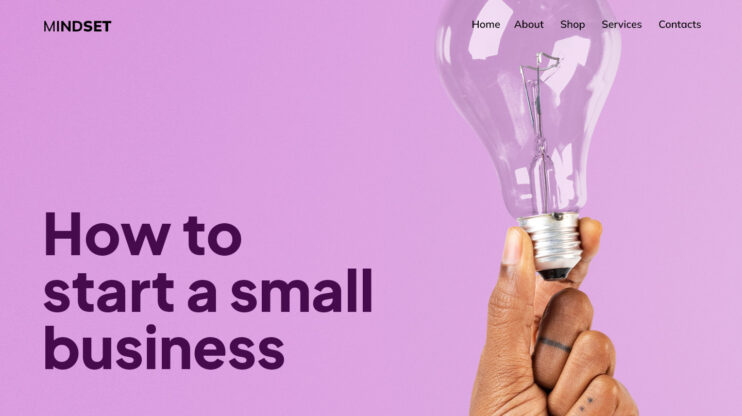I never thought delivery would become an important topic for me until I started planning my science box business for kids as a side hustle. Like many entrepreneurs, I began with a simple plan: create engaging science kits and deliver them myself. After all, managing deliveries for a small operation seemed simple.
During a late-night spreadsheet session, I discovered a pattern I’ve seen repeatedly in growing companies – if my business grew as planned, I’d spend more time delivering boxes than creating the educational content. This realization aligned with a growing trend among online consumers: 68% prioritize shorter delivery windows, and 72% value the convenience of customer-preferred delivery slots over speed, according to Capgemini. Meeting these expectations would require a shift in how I approached logistics – ignoring this would risk alienating the very customers I aimed to serve.
In this exploration, I’ll share what I’ve discovered about delivery solutions through my journey from planning a one-woman operation to designing a scalable delivery system. I’ll break down the key decision points, hidden costs, and strategic frameworks I’ve developed to help you make better delivery decisions for your growth stage.

Create your online store in minutes!
Looking to sell online? Develop and launch your store with 10Web AI Ecommerce Website Builder.
Modern delivery expectations
Delivery expectations have changed a lot in recent years. As I discovered, customers today expect a delivery experience that’s fast, transparent, flexible and cost-effective. Consumers define “fast delivery” as delivery within two days, while only a few years ago, a week was considered acceptable. A recent report from Parcel showed that nearly 60% of users pay for faster deliveries and 69% of them pay for next-day delivery.
This caught my attention when I heard Andrew Youderian break it down on the Ecommerce Fuel podcast. His simple approach – offer free standard shipping but charge for faster options – matches what I’ve seen work well in good online stores. It just makes sense: customers get their free shipping option, but those who want it faster can pay extra.
Shipping price is another important factor, with studies showing that 48% of shoppers abandon their carts at checkout due to additional costs like shipping and taxes. However, this sensitivity to shipping price has led to interesting discoveries in pricing strategy. When ecommerce expert Bill D’Alessandro experimented with pricing models, he found that offering a product at $35 with free shipping doubled conversion rates compared to the same product at $30 plus $4.99 shipping, despite the total cost being virtually identical. This psychological impact of “free shipping” has become a crucial element in modern ecommerce strategy, showing how deeply shipping costs influence consumer behavior.
I will explain more delivery strategies later. But for now, let’s keep in mind this checklist of the factors that the customers value:
- Predictable delivery windows (to ensure someone’s home to receive the package)
- Real-time tracking (to plan around delivery)
- Flexible delivery options (including safe drop-off locations)
- Reasonable costs (as this would be a recurring purchase)
- Safety measures (to ensure secure and tamper-proof delivery)
Building your delivery infrastructure
In my analysis of successful ecommerce operations, I’ve found that choosing the right delivery model is like solving a complex optimization problem. Think of it as choosing between building your own car (in-house delivery), using public transportation (3PL), or a combination of both (hybrid model).
Self-fulfillment
Starting with self-fulfillment – my initial plan – I quickly recognized both its appeal and limitations. While it offers complete control and higher margins (I calculated a 15-20% cost savings compared to other methods), it comes with hidden costs that become apparent at scale. In my own planning, I realized that managing inventory, packing orders, and coordinating deliveries would consume more than half of my operational time once I exceeded 80 weekly orders.
Third-party logistics (3PL)
Successful ecommerce businesses don’t wait until they’re overwhelmed to make the switch to 3PL. Looking at the data, I found that while only 46% of Fortune 500 companies used 3PL services a decade ago, that number has increased to 90% today. Interestingly, the most agile companies don’t treat 3PL as a last resort when they’re drowning in orders, but as a strategic early move.
While keeping logistics in-house might seem cheaper on paper, outsourcing to 3PL providers often leads to better overall business performance by allowing companies to focus on their core strengths. In my case, this would mean more time developing engaging science experiments rather than competing with shipping companies.
Choosing the right model
I’ve found that each operation requires a distinct logistics approach: small businesses thrive with full 3PL outsourcing to stay lean and focused on growth, mid-sized companies often succeed with a hybrid model that blends in-house predictable routes with 3PL flexibility for handling surges, while larger operations typically maintain their core logistics in-house for control while using 3PLs for specialized needs like international expansion or seasonal peaks.
The decision matrix I use looks like this:
| Business size | Order volume | Geographic spread | Recommended model |
| Small | <1000/month | Single region | Pure 3PL |
| Medium | 1000-10000 | Multi-regional | Hybrid |
| Large | >10000/month | Multi-regional | 3PL + In-house |
Technology integration considerations
When building a delivery system, think of technology integration like constructing a house – you need a solid foundation (like a reliable shipping partner) before adding the walls and roof (like tracking software and integrations). Each new piece should click into place while making the whole structure stronger.
Optimizing your delivery operations
When I first mapped out the operations for my side hustle, I imagined myself personally handling every shipment with care. But that idea quickly evaporated when I considered scaling beyond my first hundred subscribers. This led me to research automation and efficiency solutions.
In one of the 2xEcommerce podcast episodes about delivery, Gitika Jain explained how automated business rules can handle everything from label printing to returns management and order consolidation. Her observation that “Automation reduces manual errors and speeds up operations, freeing merchants to focus on scaling their businesses” really hit home – I needed to spend my time creating better products, not manually processing shipping labels.
The power of branded tracking
The interesting part about modern tracking systems is that they’re not just about logistics anymore. Another insight from Gitika’s podcast episode transformed how I thought about the post-purchase experience. She emphasized that “By customizing tracking pages, merchants maintain brand control while keeping customers engaged during the post-purchase journey.” It’s a shift from simple package monitoring to creating an extended customer experience that continues well after purchase.
Route optimization software
As we identified, speed is one of the keys in delivery. Modern optimization software helps us with this. The system continuously recalculates for maximum efficiency when disruptions occur, shifting the entire delivery sequence rather than just individual routes.
By grouping geographic patterns, the software creates dense delivery networks that reduce both fuel usage and transit time. This optimization aligns operational efficiency with environmental impact, demonstrating how technological systems can serve multiple business objectives simultaneously.
Drone delivery
Initially, I never imagined considering drones as part of the solution. But the more I looked into the complexities of last-mile logistics (final delivery to the doorstep), the more intrigued I became by how innovative technologies could simplify these challenges.
In researching drone delivery, I came across a discussion about drones on the Logistics of Logistics podcast. One fact from the podcast stuck with me: drones have the potential to reach remote areas or bypass congested urban routes, making them uniquely suited for quick, efficient last-mile delivery. The idea that “drones can reduce delivery times and overcome logistical hurdles traditional vehicles face” shifted my perspective on scaling operations.
Omnichannel integration
When online stores, physical shops, apps, and social media work together smoothly, it creates smarter ways to get products to customers. This is called omnichannel integration—connecting all sales channels into one system.
It makes delivery better by offering options like buying online and picking up in-store (BOPIS) or shipping orders directly from local stores. By keeping track of inventory across all locations, businesses can use any store as a mini-warehouse. This helps deliver products faster and saves money.
Platforms like 10Web’s ecommerce website builder, which works with WooCommerce, make it easy for businesses to use these strategies. With flexible shipping options and tools to connect all sales channels, 10Web helps businesses choose the fastest and cheapest delivery method, whether it’s shipping from a warehouse, a local store, or letting customers pick up their orders in-store.

Create your online store in minutes!
Looking to sell online? Develop and launch your store with 10Web AI Ecommerce Website Builder.
Last-mile delivery challenges and solutions
The last mile presents the most complex challenges – and the most innovative solutions. The dynamics fascinate me because they vary dramatically between urban and rural settings, each requiring distinct approaches.
Urban delivery dynamics
Urban density creates a paradox. While more customers are concentrated in a smaller area, congestion and parking limitations create significant inefficiencies. But businesses are adapting to this with creative solutions. The shift toward bikes and scooters in congested areas isn’t just about avoiding traffic – it’s about rethinking how we navigate urban spaces.
Additionally, from my exploration into delivery metrics, I’ve found that real-time tracking systems enhance delivery efficiency by providing continuous data that enables dynamic route adjustments and reduces failed delivery attempts. Notably, 91% of consumers actively track their packages, with 39% checking once a day and 19% multiple times daily. This high engagement allows companies to optimize delivery routes in real-time, leading to improved delivery success rates and operational efficiency
Rural delivery innovation
The challenges in rural areas present a different dynamic entirely. I’ve analyzed how the economics of rural delivery are shaped by the inverse relationship between distance and delivery density. This has sparked innovations like mobile depots – essentially moving warehouses that transform delivery logistics in sparse areas.
As mentioned before, studying drone delivery trials has shown me that rural areas might actually lead the way in delivery innovation. The open spaces and clear need for rapid delivery to remote locations create perfect testing conditions for new technologies.
Sustainable systems development
Sustainability in delivery operations isn’t just an environmental concern, but a core business efficiency metric. What particularly interests me is how sustainable practices often align with cost reduction, creating a positive feedback loop for both business and environmental outcomes.
The shift toward electric vehicles and reusable packaging shows a recurring theme I often observe in evolving systems: solutions that solve multiple problems simultaneously. When businesses optimize routes and group deliveries, they’re not just cutting emissions – they’re building more efficient delivery networks.

Create your online store in minutes!
Looking to sell online? Develop and launch your store with 10Web AI Ecommerce Website Builder.
The role of AI in ecommerce delivery
AI has the potential to transform raw data into intelligence that shapes every step of the delivery process. It creates feedback loops that continuously improve delivery operations.
Predictive inventory management
In studying AI’s impact on inventory, I’ve observed that it goes beyond basic stock predictions. By analyzing insights in purchase history, seasonal trends, and even weather data, AI helps businesses anticipate demand with remarkable precision. What fascinates me is how these systems learn from their mistakes, becoming more accurate over time.
Delivery intelligence systems
Modern delivery systems are like smart traffic controllers for your packages, but they do much more than just find the quickest route. AI systems don’t just map the shortest path – they consider traffic patterns, delivery windows, vehicle capacity, and driver schedules simultaneously. Businesses using AI-powered routing reduce delivery times by up to 30% while cutting fuel costs.
Customer behavior analysis
AI reveals patterns that humans might overlook. It tracks not only what customers buy but also their delivery preferences—like timing, locations, and special instructions. This information helps improve delivery strategies, making the service more personalized over time.
Adaptive operations
What I find most compelling is how AI creates self-improving delivery systems. Each delivery adds data points that help optimize future operations. By monitoring success rates, delivery times, and customer satisfaction, these systems continuously refine their predictions and recommendations, leading to more efficient operations over time.
Conclusion
Mapping out delivery solutions for my side hustle led me to understand a fundamental truth about modern ecommerce: delivery isn’t just about getting products from A to B anymore. From research, I’ve found that companies succeed when they build flexible delivery systems early, integrate the right technology, and adapt as they grow. Whether you’re planning to ship science kits like me or running a large operation, the trend is clear – treating delivery as a core part of your business strategy, rather than an afterthought, sets the foundation for sustainable growth.
FAQ
How can I track my ecommerce shipment? Which companies offer fast delivery options? What is the average delivery time for ecommerce? How do I choose a delivery partner? What are the costs associated with delivery services? Are there eco-friendly delivery options available? What features should I look for in delivery solutions?














